Showing Spotlights 145 - 152 of 544 in category All (newest first):
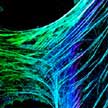 Scientists have discovered that cell sex is an important overlooked factor at the nanobio interfaces. More specifically, depending on their sex, cells respond differently to the exact same type of nanoparticles. These findings have a capacity to optimize clinical translation of nanoparticles and also to help researchers to better design and produce safe and efficient therapeutic sex-specific nanoparticles. It is likely that there are other undiscovered differences that could influence nanoparticle uptake.
Scientists have discovered that cell sex is an important overlooked factor at the nanobio interfaces. More specifically, depending on their sex, cells respond differently to the exact same type of nanoparticles. These findings have a capacity to optimize clinical translation of nanoparticles and also to help researchers to better design and produce safe and efficient therapeutic sex-specific nanoparticles. It is likely that there are other undiscovered differences that could influence nanoparticle uptake.
Mar 15th, 2018
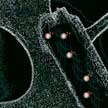 A popular structure for the development of nanodelivery systems are hollow tubular nanoparticles. In new work, researchers show that a hydrogel can be confined within the cavity of halloysite nanotubes (HNTs) by means of an easy strategy. The alginate network inside the HNTs cavity can be triggered by chemical stimuli (by calcium chelators) altering the kinetics, which results in the release of the cargo. This shows that halloysite with tunable hydrophilic/hydrophobic interfaces can act as nanotemplate for the synthesis of drug delivery systems based on biopolymer hydrogels.
A popular structure for the development of nanodelivery systems are hollow tubular nanoparticles. In new work, researchers show that a hydrogel can be confined within the cavity of halloysite nanotubes (HNTs) by means of an easy strategy. The alginate network inside the HNTs cavity can be triggered by chemical stimuli (by calcium chelators) altering the kinetics, which results in the release of the cargo. This shows that halloysite with tunable hydrophilic/hydrophobic interfaces can act as nanotemplate for the synthesis of drug delivery systems based on biopolymer hydrogels.
Mar 1st, 2018
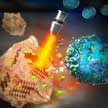 As a new member of the two-dimensional (2D) nanomaterial family, black phosphorus (BP) has attracted considerable attention in biomedicine, due to its unique physicochemical properties as well as excellent biocompatibility. Researchers have now demonstrated a novel concept of light activation of BP hydrogel to release drugs for cancer therapy. This BP hydrogel is comprised of BP nanosheets as a photosensitizer and hydrogel as a hydrophilic container for drugs. After injection, these nanosheets convert light to thermal energy when exposed to laser irradiation, leading to heating of the hydrogel matrix.
As a new member of the two-dimensional (2D) nanomaterial family, black phosphorus (BP) has attracted considerable attention in biomedicine, due to its unique physicochemical properties as well as excellent biocompatibility. Researchers have now demonstrated a novel concept of light activation of BP hydrogel to release drugs for cancer therapy. This BP hydrogel is comprised of BP nanosheets as a photosensitizer and hydrogel as a hydrophilic container for drugs. After injection, these nanosheets convert light to thermal energy when exposed to laser irradiation, leading to heating of the hydrogel matrix.
Feb 27th, 2018
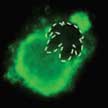 From interaction with bacteria, propulsion based on cells, in vivo medical applications to even intracellular applications, the rapidly expanding development of micro- and nanomachines with sizes comparable to or even smaller than mammalian cells, has led this field to advance from understanding of basic motion mechanisms to applications in living biosystems. A recent review highlights the recent efforts for and toward application of micro/nanomachines in living biosystems, including microorganisms, biological cells, and human body. Applications of micro- and nanomachines in living biosystems are reviewed from two aspects: their interaction with other microscopic organisms or biological units, and the efforts toward their application in the human body.
From interaction with bacteria, propulsion based on cells, in vivo medical applications to even intracellular applications, the rapidly expanding development of micro- and nanomachines with sizes comparable to or even smaller than mammalian cells, has led this field to advance from understanding of basic motion mechanisms to applications in living biosystems. A recent review highlights the recent efforts for and toward application of micro/nanomachines in living biosystems, including microorganisms, biological cells, and human body. Applications of micro- and nanomachines in living biosystems are reviewed from two aspects: their interaction with other microscopic organisms or biological units, and the efforts toward their application in the human body.
Jan 30th, 2018
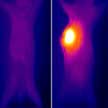 Researchers propose novel flexible Mn-doped zirconium metal-organic frameworks nanocubes for highly effective combination of microwave dynamic and thermal therapy against cancer. This is the first report of determining the microwave thermal conversion efficiency, which can be used to evaluate, compare, and predict the microwave sensitivity of different microwave-sensitive agents. More importantly, such Mn-ZrMOF nanocubes generate abundant reactive oxygen species of hydroxyl radicals under microwave irradiation.
Researchers propose novel flexible Mn-doped zirconium metal-organic frameworks nanocubes for highly effective combination of microwave dynamic and thermal therapy against cancer. This is the first report of determining the microwave thermal conversion efficiency, which can be used to evaluate, compare, and predict the microwave sensitivity of different microwave-sensitive agents. More importantly, such Mn-ZrMOF nanocubes generate abundant reactive oxygen species of hydroxyl radicals under microwave irradiation.
Jan 8th, 2018
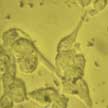 The role of artificial nanomotors integrated with therapeutic capabilities is a very promising field for clinical applications of medical nanotechnology. Researchers now have demonstrated the intelligent design of nanomotors with a single coating of ferrite, which act as a spacer layer as well as providing therapeutic potential by magnetic hyperthermia. These motors can be remotely maneuvered. The team also tackled the problem of magnetic agglomeration associated with ferromagnetic nanomotors, which limits their biomedical application.
The role of artificial nanomotors integrated with therapeutic capabilities is a very promising field for clinical applications of medical nanotechnology. Researchers now have demonstrated the intelligent design of nanomotors with a single coating of ferrite, which act as a spacer layer as well as providing therapeutic potential by magnetic hyperthermia. These motors can be remotely maneuvered. The team also tackled the problem of magnetic agglomeration associated with ferromagnetic nanomotors, which limits their biomedical application.
Jan 5th, 2018
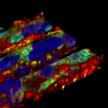 Crossing the blood-brain barrier (BBB) is the object of intensive research in nanotechnology and biomedicine for developing new therapies against brain cancer and for the treatment of neurodegenerative diseases. For this reason, it is extremely important to develop realistic models of the BBB, which mimic as most accurately as possible the in vivo environment. The development of high-resolution 3D-printing technologies has now enabled researchers to develop a realistic 3D bio-hybrid microfluidic model of BBB inspired by the in vivo neurovasculature.
Crossing the blood-brain barrier (BBB) is the object of intensive research in nanotechnology and biomedicine for developing new therapies against brain cancer and for the treatment of neurodegenerative diseases. For this reason, it is extremely important to develop realistic models of the BBB, which mimic as most accurately as possible the in vivo environment. The development of high-resolution 3D-printing technologies has now enabled researchers to develop a realistic 3D bio-hybrid microfluidic model of BBB inspired by the in vivo neurovasculature.
Dec 21st, 2017
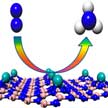 Single-atom catalysts (SACs) have emerged as a new frontier in heterogeneous catalysis, and demonstrated distinguishing performances for various reactions due to their high catalytic activity with a significantly reduced amount of metals used. However, the catalytic performance of SACs for nitrogen fixation and conversion has been rarely explored. Scientists now have proposed a quite promising single-atom-based electrocatalyst for N2 reduction to NH3 under ambient conditions.
Single-atom catalysts (SACs) have emerged as a new frontier in heterogeneous catalysis, and demonstrated distinguishing performances for various reactions due to their high catalytic activity with a significantly reduced amount of metals used. However, the catalytic performance of SACs for nitrogen fixation and conversion has been rarely explored. Scientists now have proposed a quite promising single-atom-based electrocatalyst for N2 reduction to NH3 under ambient conditions.
Nov 17th, 2017
 Scientists have discovered that cell sex is an important overlooked factor at the nanobio interfaces. More specifically, depending on their sex, cells respond differently to the exact same type of nanoparticles. These findings have a capacity to optimize clinical translation of nanoparticles and also to help researchers to better design and produce safe and efficient therapeutic sex-specific nanoparticles. It is likely that there are other undiscovered differences that could influence nanoparticle uptake.
Scientists have discovered that cell sex is an important overlooked factor at the nanobio interfaces. More specifically, depending on their sex, cells respond differently to the exact same type of nanoparticles. These findings have a capacity to optimize clinical translation of nanoparticles and also to help researchers to better design and produce safe and efficient therapeutic sex-specific nanoparticles. It is likely that there are other undiscovered differences that could influence nanoparticle uptake.
 Subscribe to our Nanotechnology Spotlight feed
Subscribe to our Nanotechnology Spotlight feed





